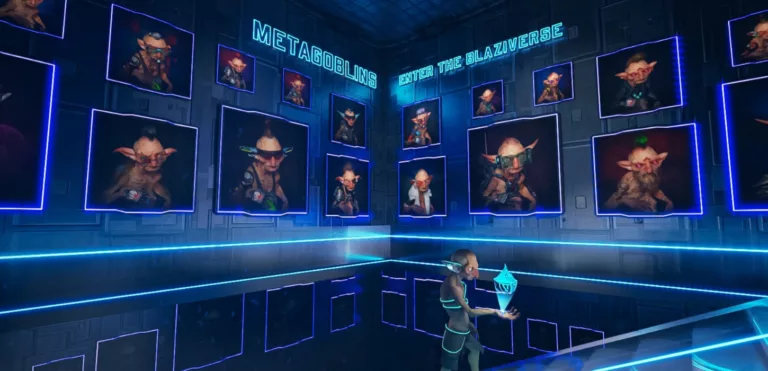What is an NFT? Non-Fungible Tokens Explained
An NFT, short for a non-fungible token, is a digital asset stored on a blockchain representing a unique item, such as a piece of art, music, in-game items, and more. NFTs are becoming increasingly popular as they offer a way to prove ownership of digital assets, both tangible and virtual items.
Before NFTs, there was no way to prove ownership in the digital world. Therefore, it can be said that NFTs brought a sense of uniqueness to the digital world for the first time since the inception of the internet, which is what makes these digital assets so powerful.
Furthermore, NFTs help facilitate the transfer of value without the need for trust. The way in which NFTs help facilitate value transfer is through a process called “smart contracts”. A smart contract is a protocol that automatically implements the terms of a contract on a decentralized blockchain as opposed to trusting an external authority to oversee such agreements.
In their current state, NFTs are largely similar to digital collectibles. They’re usually static pictures issued by a prominent company and can be traded online. NFTs are securely recorded on a blockchain — the technology that underpins cryptocurrencies — which ensures they are one-of-a-kind.
How Is an NFT Different from Cryptocurrency?
Cryptocurrencies, such as bitcoin and ethereum, are also digital assets stored on a blockchain. However, cryptocurrencies are fungible, which means that each unit is interchangeable with another unit. In other words, one bitcoin is the same as any other bitcoin.
NFTs, on the other hand, are non-fungible, meaning each token is unique and cannot be interchanged with another token. This also means that no two NFTs have the same value.

How Do NFTs Work?
NFTs are created through a process called minting. To mint an NFT, a user first needs to create a digital asset, which can be anything from a piece of art to music or any other digital item. Then they need to store that file on a blockchain.
This is where NFT marketplaces come in handy, as they offer everyone a straightforward way to mint NFTs. In most marketplaces, all users need to do is upload their file and click “mint.” Once minted, you can put the NFT on sale or just hold it.
One of the benefits of storing your digital asset on a blockchain is that it becomes immutable. This means that once your asset is minted as an NFT, it cannot be changed or deleted. This gives NFTs a lot of value, as they can be seen as a permanent record of ownership.
The most popular blockchain for NFTs is Ethereum, which has ERC-721 as its token standard for NFTs. It is worth noting that other blockchains, particularly Solana, are also becoming popular destinations for NFT enthusiasts due to their fast speed and low cost.
The Purpose of NFTs
NFTs are used for a variety of purposes. At its core, NFTs act as a deed of ownership to provably scarce digital items. However, due to their vast potential, they can even be used to represent physical items. For example, a piece of art could be minted as an NFT and stored on a blockchain.
NFTs can also be used to represent items in virtual worlds. Cryptokitties, the first blockchain game that incorporated NFTs, allowed players to purchase, trade, and breed virtual cats stored on the Ethereum blockchain.
Since NFTs can be traded, they have also become an attractive option for some investors. Many traders have made it their full-time job to find promising NFTs and flip them for a profit right after their mint.

It is worth noting that NFTs are often associated with a particular event or experience, which makes them more personal. For instance, an NFT might be associated with a particular basketball game or a piece of art.
Nevertheless, the largest use case of NFTs currently lies in the digital art field. Artists can release their digital content such as music or videos in the form of NFTs, which could help reduce digital piracy.
NFTs could also have a wide range of use cases outside the art field. For instance, a school may provide graduates with an NFT, making it simple for employers to confirm a candidate’s educational background. Similarly, a venue might sell event tickets using NFTs, potentially lowering the amount of resale fraud.
Conclusion
NFTs are new and exciting innovations with massive potential. They offer a way to prove ownership of digital assets, both tangible and virtual items. In addition, NFTs have a wide range of potential use cases, which can range from representing ownership of digital items to reducing digital piracy by empowering artists to create unique content.






